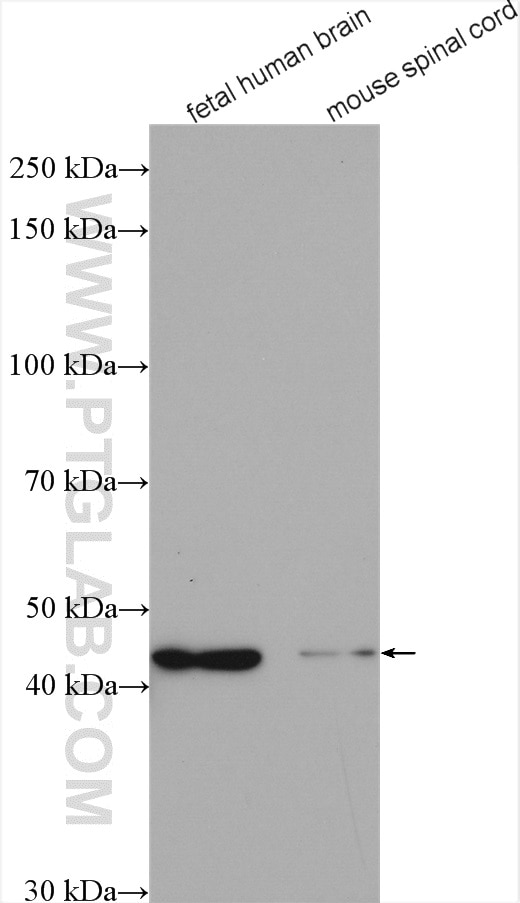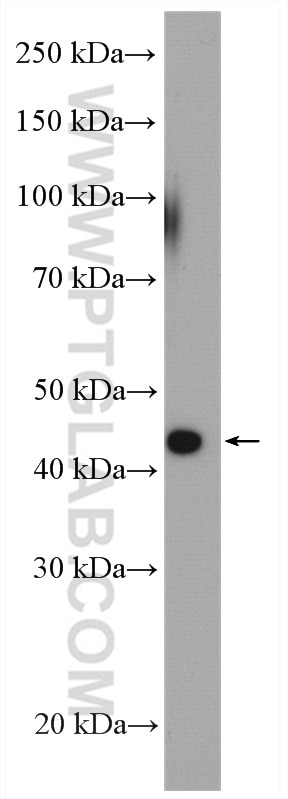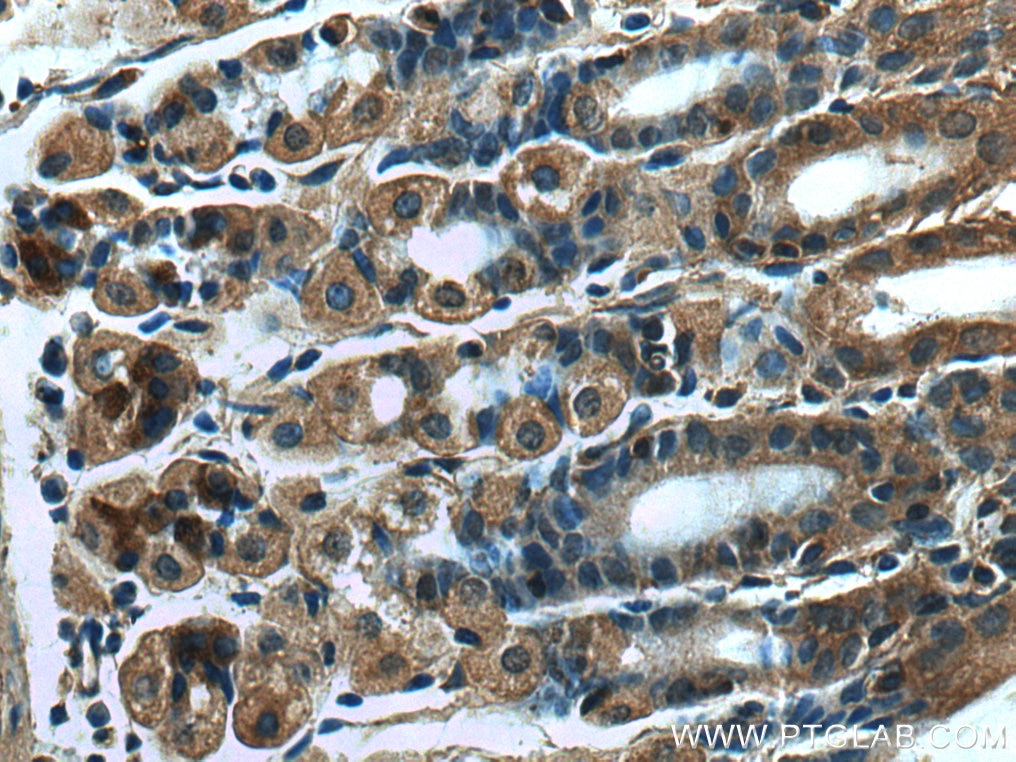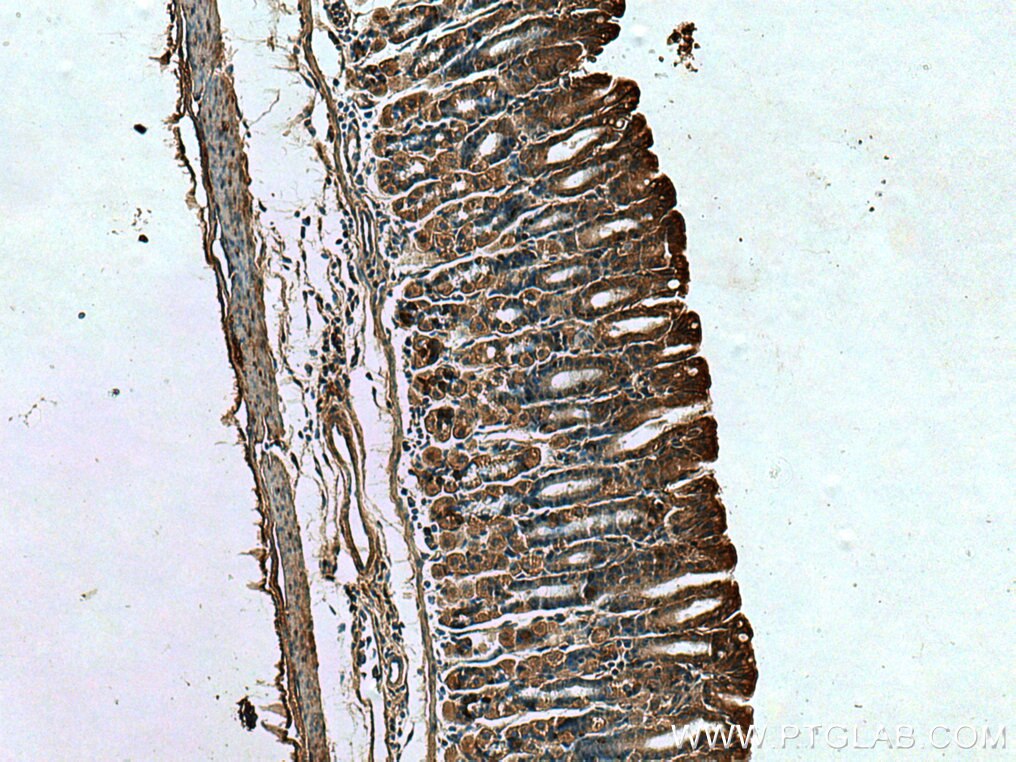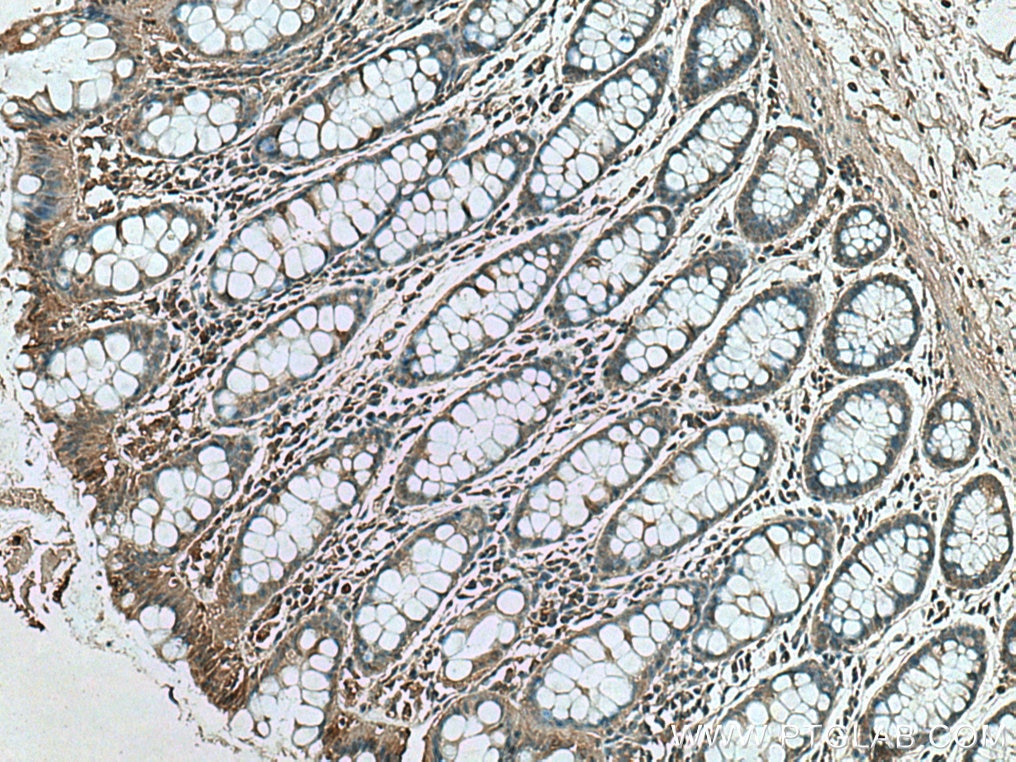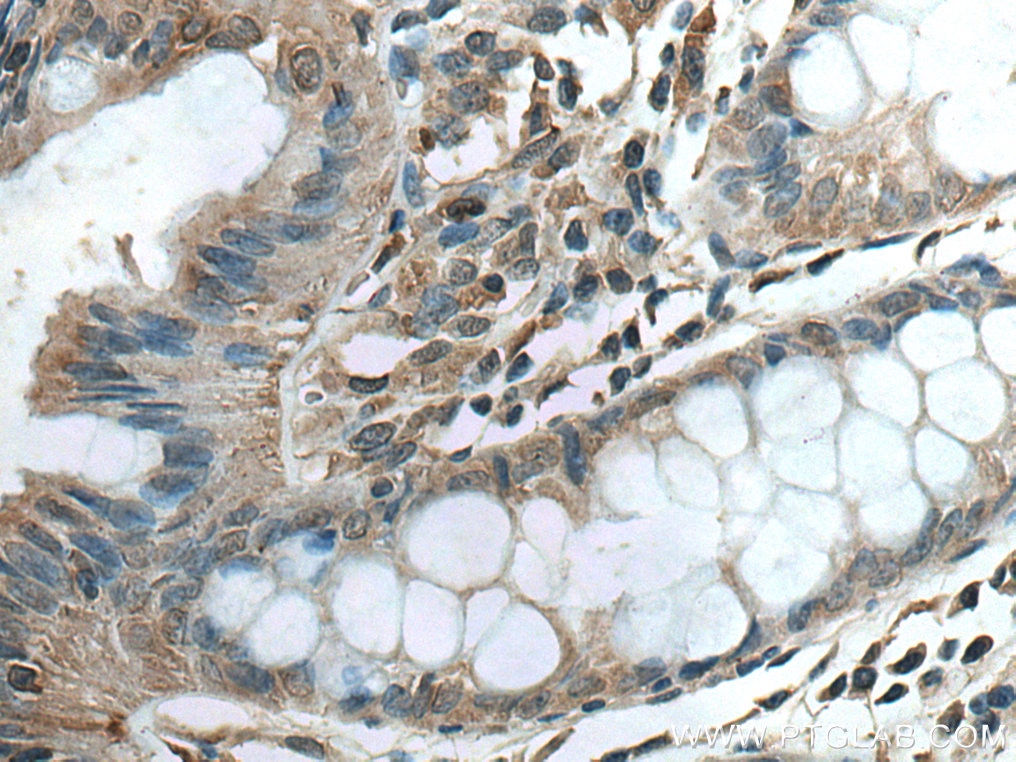Anticorps Polyclonal de lapin anti-RSAD2
RSAD2 Polyclonal Antibody for IHC, WB,ELISA
Hôte / Isotype
Lapin / IgG
Réactivité testée
Humain, souris et plus (1)
Applications
WB, IP, IHC, IF, ELISA
Conjugaison
Non conjugué
N° de cat : 28089-1-AP
Synonymes
Galerie de données de validation
Applications testées
| Résultats positifs en WB | tissu cérébral humain fœtal, cellules A549, tissu de moelle épinière de souris |
| Résultats positifs en IHC | tissu d'estomac de souris, tissu de côlon humain il est suggéré de démasquer l'antigène avec un tampon de TE buffer pH 9.0; (*) À défaut, 'le démasquage de l'antigène peut être 'effectué avec un tampon citrate pH 6,0. |
Dilution recommandée
| Application | Dilution |
|---|---|
| Western Blot (WB) | WB : 1:500-1:2000 |
| Immunohistochimie (IHC) | IHC : 1:50-1:500 |
| It is recommended that this reagent should be titrated in each testing system to obtain optimal results. | |
| Sample-dependent, check data in validation data gallery | |
Applications publiées
| KD/KO | See 1 publications below |
| WB | See 11 publications below |
| IHC | See 1 publications below |
| IF | See 1 publications below |
| IP | See 1 publications below |
Informations sur le produit
28089-1-AP cible RSAD2 dans les applications de WB, IP, IHC, IF, ELISA et montre une réactivité avec des échantillons Humain, souris
| Réactivité | Humain, souris |
| Réactivité citée | canin, Humain, souris |
| Hôte / Isotype | Lapin / IgG |
| Clonalité | Polyclonal |
| Type | Anticorps |
| Immunogène | RSAD2 Protéine recombinante Ag27733 |
| Nom complet | radical S-adenosyl methionine domain containing 2 |
| Masse moléculaire calculée | 361 aa, 42 kDa |
| Poids moléculaire observé | 42 kDa |
| Numéro d’acquisition GenBank | BC017969 |
| Symbole du gène | RSAD2 |
| Identification du gène (NCBI) | 91543 |
| Conjugaison | Non conjugué |
| Forme | Liquide |
| Méthode de purification | Purification par affinité contre l'antigène |
| Tampon de stockage | PBS avec azoture de sodium à 0,02 % et glycérol à 50 % pH 7,3 |
| Conditions de stockage | Stocker à -20°C. Stable pendant un an après l'expédition. L'aliquotage n'est pas nécessaire pour le stockage à -20oC Les 20ul contiennent 0,1% de BSA. |
Informations générales
RSAD2 (radical S-adenosyl methionine domain-containing protein 2), also known as CIG5 (cytomegalovirus-induced gene 5 protein), vig1, viperin or CIG33, displays antiviral effect against HIV-1 virus, hepatitis C virus, human cytomegalovirus, and aphaviruses. Expression of the protein can be induced by interferon.
Protocole
| Product Specific Protocols | |
|---|---|
| WB protocol for RSAD2 antibody 28089-1-AP | Download protocol |
| IHC protocol for RSAD2 antibody 28089-1-AP | Download protocol |
| Standard Protocols | |
|---|---|
| Click here to view our Standard Protocols |
Publications
| Species | Application | Title |
|---|---|---|
Int J Mol Sci Rubella Virus Triggers Type I Interferon Antiviral Response in Cultured Human Neural Cells: Involvement in the Control of Viral Gene Expression and Infectious Progeny Production | ||
Am J Cancer Res Identification of potential immune-related circRNA-miRNA-mRNA regulatory network in cutaneous squamous cell carcinoma | ||
Cell Mol Biol Lett 5-Methoxyflavone-induced AMPKα activation inhibits NF-κB and P38 MAPK signaling to attenuate influenza A virus-mediated inflammation and lung injury in vitro and in vivo | ||
Front Nutr The Effect of Flammulina velutipes Polysaccharide on Immunization Analyzed by Intestinal Flora and Proteomics. | ||
J Appl Toxicol Intratracheal instillation of graphene oxide decreases anti-virus responses and lipid contents via suppressing Toll-like receptor 3 in mouse livers. | ||
Biochemistry Interactions between Viperin, Vesicle-Associated Membrane Protein A, and Hepatitis C Virus Protein NS5A Modulate Viperin Activity and NS5A Degradation. |
